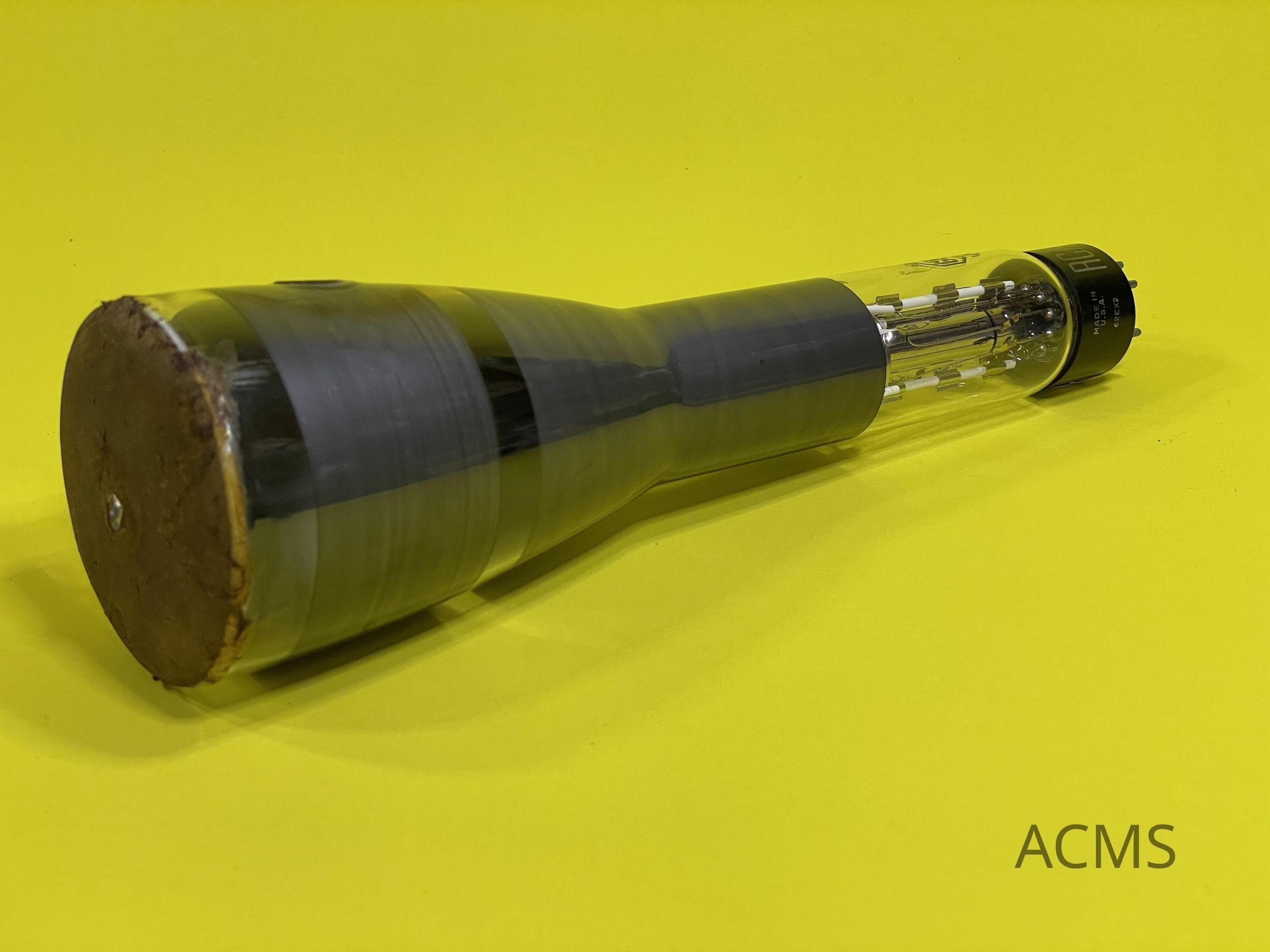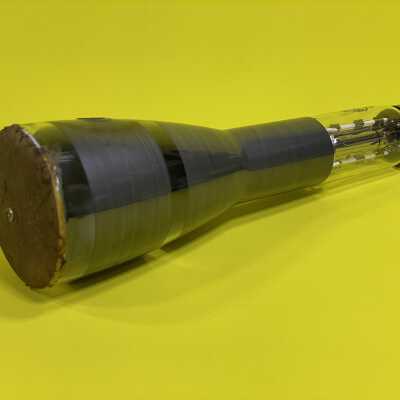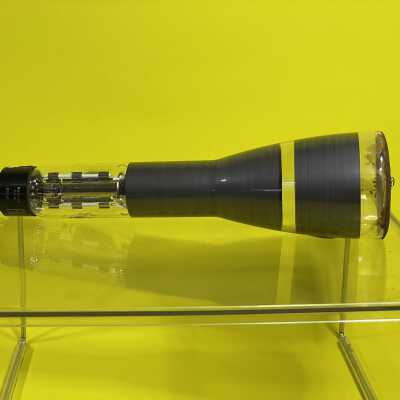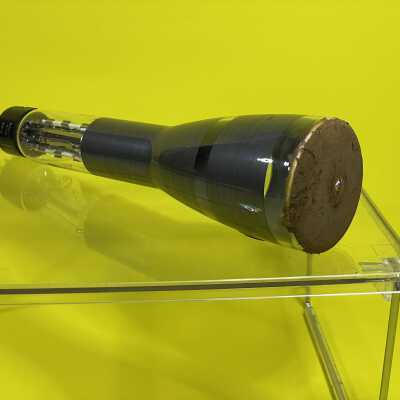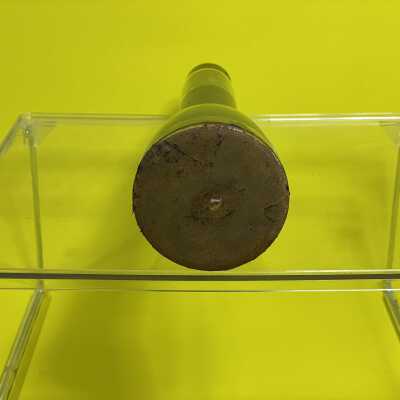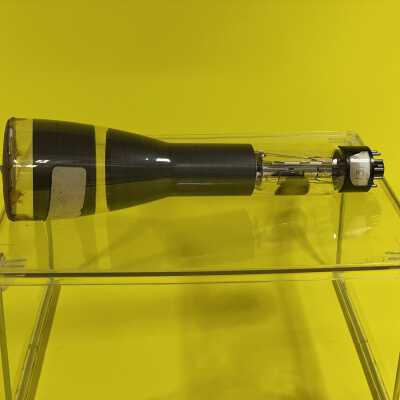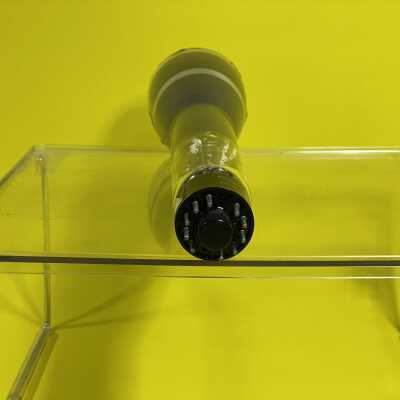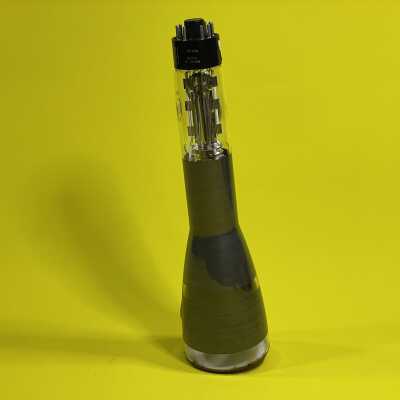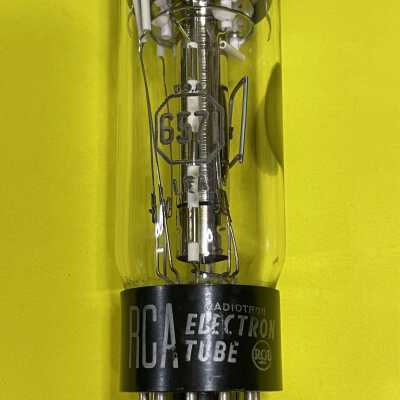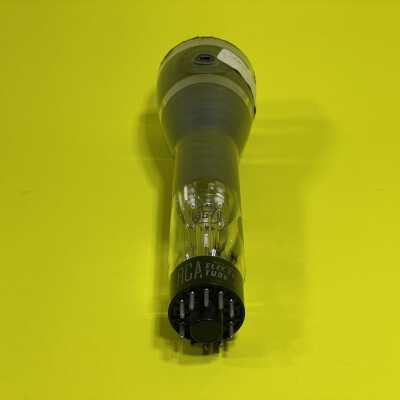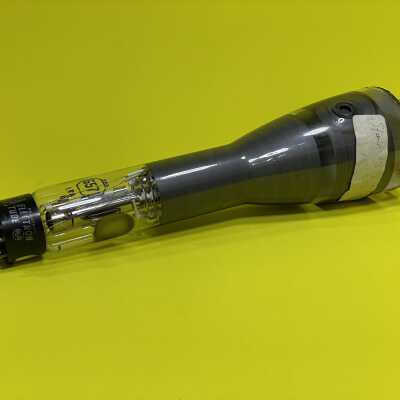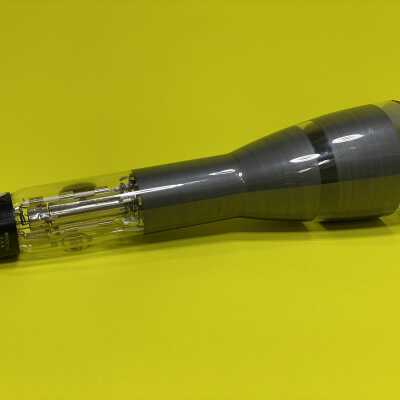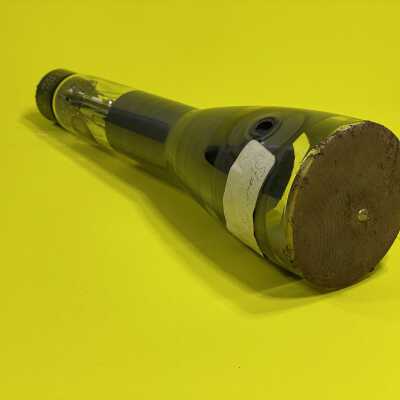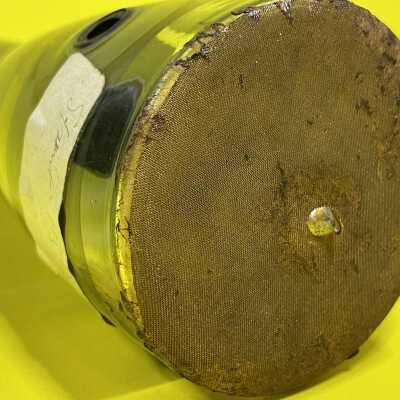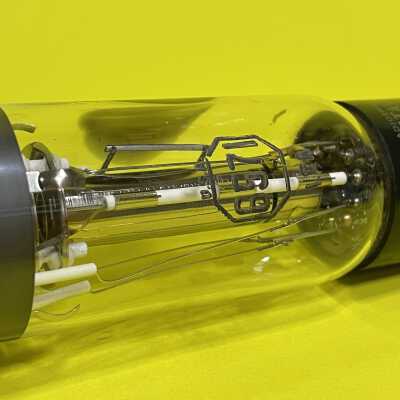Williams–Kilburn Cathode Ray Tube from SILLIAC
Name/Title
Williams–Kilburn Cathode Ray Tube from SILLIACEntry/Object ID
2022.7.8Description
A Williams–Kilburn Cathode Ray Tube used in the University of Sydney's SILLIAC The Williams-Kilburn tube is an early form of computer memory. It was the first random-access digital storage device. It works by displaying a grid of dots on a cathode ray tube (CRT). Due to the way CRTs work, this creates a small charge of static electricity over each dot. The charge at the location of each of the dots is read by a thin metal sheet just in front of the display. "Although the phosphor on the CRT would glow at charged points, in a way that might be distinguishable (between 0 and 1), the current contents of a CRT storage tube could not be viewed directly in practice. The front of the tube would be obscured by the pick-up plate. (At first this was a wire mesh, but later it was a metal plate.) Also the CRT had to be screened from outside electrical interference, e.g. local trams or close and aggressive motor cycles, so it was enclosed in a metal box. So typically the information on a Williams-Kilburn Tube would be displayed on a separate display tube, which would be updated synchronously with the refresh cycle of the Williams-Kilburn CRT Store." – School of Computer Science, University of ManchesterCollection
Australia, SILLIACCategory
4.8.2.2 CRT Monitor
4.8.2.0 Computer Monitor, 4.8.0 Output Device, 4.0 Peripherals
